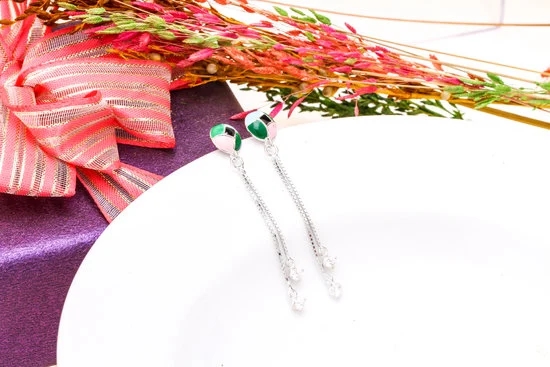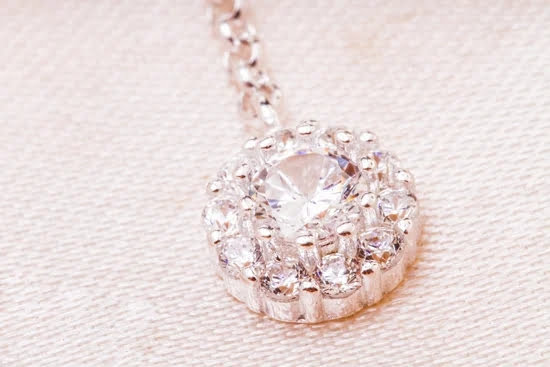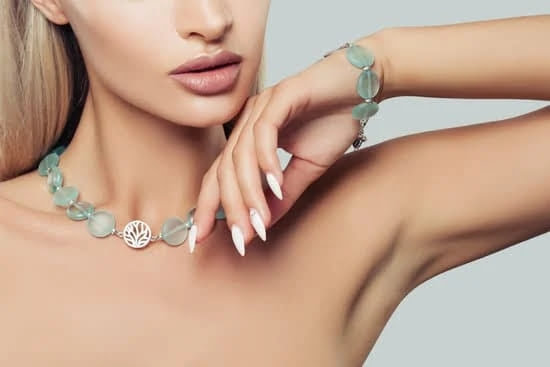Fine jewelry is an exquisite and valuable form of adornment that has captivated human civilization for centuries. In this article, we will explore the various aspects that contribute to defining what makes jewelry fine. From the materials used to the craftsmanship, design, history, value, authenticity, and future trends in the industry, we will delve into the world of fine jewelry to uncover its allure and significance.
When determining what makes jewelry fine, it is essential to consider the materials used in its creation. Precious metals such as gold, silver, and platinum, along with gemstones like diamonds, rubies, emeralds, and sapphires play a significant role in defining the quality and worth of fine jewelry.
The intricate craftsmanship involved in creating fine jewelry sets it apart from mass-produced pieces. Each piece is meticulously crafted by skilled artisans who pay attention to every detail, ensuring that only the highest standards are met.
Furthermore, the design of fine jewelry reflects elegance and sophistication, often incorporating innovative techniques and artistic creativity. Understanding the historical context of fine jewelry allows for a deeper appreciation of its evolution over time.
Additionally, the value and investment potential of fine jewelry make it a sought-after asset in today’s market. Finally, we will also explore how one can distinguish genuine fine jewelry from replicas and look into emerging trends and innovations shaping the future of this timeless industry.
Materials
When it comes to defining what makes jewelry fine, the materials used play a significant role. Precious metals such as gold, platinum, and silver are often used in fine jewelry for their durability, rarity, and timeless appeal. These metals are not only valuable but also have a rich history of being used in jewelry making. Gemstones also contribute to the value of fine jewelry, with diamonds, rubies, sapphires, and emeralds being highly sought after for their beauty and rarity.
In the world of fine jewelry, craftsmanship is of utmost importance. The intricate work that goes into creating a piece of fine jewelry is what sets it apart from other types of jewelry. From the precision in setting gemstones to the attention to detail in creating elaborate designs, the craftsmanship involved in making fine jewelry requires a high level of skill and expertise.
The significance of materials in fine jewelry cannot be overstated. The use of precious metals and gemstones, along with the craftsmanship involved in creating these pieces, contributes to what makes jewelry fine. Whether it’s an heirloom piece passed down through generations or a modern creation crafted by skilled artisans, the materials used in fine jewelry are a defining factor in its quality and value.
| Materials | Importance |
|---|---|
| Precious Metals | Durability, rarity, timeless appeal |
| Gemstones | Beauty and rarity |
| Craftsmanship | Intricate work and attention to detail |
Craftsmanship
One of the key elements that sets fine jewelry apart from other types of jewelry is the level of craftsmanship involved in its creation. Fine jewelry is meticulously crafted by highly skilled artisans who possess a deep understanding of their craft. These artisans use traditional techniques and modern innovations to create pieces that are not only visually stunning but also durable and long-lasting.
The art of fine jewelry making involves intricate processes such as casting, soldering, stone setting, and polishing. Each step in the production process requires precision and attention to detail to ensure that the final piece meets the high standards expected of fine jewelry. Whether it’s a simple pair of diamond stud earrings or an elaborate diamond necklace, every piece of fine jewelry undergoes painstaking craftsmanship to bring out its natural beauty and brilliance.
What makes jewelry fine is the level of expertise and dedication that goes into its craftsmanship. Skilled jewelers spend years honing their craft, learning from master artisans, and perfecting their techniques to create exquisite pieces that stand the test of time. The artistry and skill involved in fine jewelry making contribute to its value and desirability among collectors and connoisseurs alike.
The future of fine jewelry making continues to evolve with advancements in technology and design concepts. While traditional techniques remain at the heart of fine jewelry craftsmanship, contemporary artisans are embracing new methods and materials to push the boundaries of creativity. As consumer tastes change and demand for sustainable practices grows, artisans are finding innovative ways to adapt while still upholding the timeless artistry that defines fine jewelry making.
Design
When it comes to fine jewelry, the design plays a crucial role in defining its elegance and sophistication. The intricate details, unique patterns, and innovative concepts are what make fine jewelry stand out from the rest. Here are some key elements to consider when understanding the design of fine jewelry:
- Timeless designs: Fine jewelry often features timeless designs that never go out of style. Whether it’s a classic solitaire diamond ring or a simple pearl necklace, these timeless pieces hold their value and allure for generations.
- Unique craftsmanship: What sets fine jewelry apart is the level of craftsmanship involved in creating each piece. From handcrafted details to custom designs, fine jewelry is a work of art that showcases the skill and dedication of the artisan.
- Symbolism and meaning: Fine jewelry is often imbued with symbolism and meaning, whether it’s through the use of specific gemstones or the incorporation of cultural motifs. Each piece tells a story and holds sentimental value for the wearer.
History
Throughout history, fine jewelry has been a symbol of wealth, power, and status. From ancient civilizations to modern times, the evolution of fine jewelry reflects the changes in society, culture, and technological advancements. Let’s take a closer look at the origins and development of fine jewelry over the centuries.
- Ancient Civilizations: Jewelry has been a part of human culture for thousands of years. From the intricate gold work of the Egyptians to the exquisite jade carvings of the Chinese, ancient civilizations used jewelry to adorn themselves and demonstrate their social standing.
- Middle Ages: During the Middle Ages, jewelry became more elaborate and ornate. The use of precious gemstones and intricate metalwork became more widespread, with designs often reflecting religious themes or symbols of power and authority.
- Renaissance: The Renaissance period saw a renewed interest in art, beauty, and craftsmanship. This influenced the design of fine jewelry, with emphasis on symmetry, balance, and harmony in both form and function.
As we look back at the history of fine jewelry, it is clear that its significance goes beyond mere adornment. Fine jewelry has always represented cultural values, artistic expression, and economic prosperity. Understanding this historical context provides insight into what makes jewelry “fine” – not just its material value or aesthetic appeal, but also its cultural and historical relevance throughout time.
Value
Long-Term Investment
One of the factors that make jewelry fine is its potential as a long-term investment. Fine jewelry, particularly those made with high-quality materials and exquisite craftsmanship, tends to appreciate in value over time. Unlike other fashion accessories, fine jewelry can retain or even increase its value over the years, making it a worthy investment for the future.
Appraisal Process
When determining the value of fine jewelry, an important aspect to consider is the appraisal process. Professional appraisers look at various factors such as the quality and rarity of gemstones, the purity of precious metals, and the intricacy of design and craftsmanship. These meticulous evaluations ensure that the true value of the jewelry is determined accurately, giving owners a better understanding of their investment.
Legacy and Sentimental Value
Aside from monetary value, another aspect that makes jewelry fine is its sentimental and legacy value. Fine jewelry is often passed down through generations as cherished heirlooms, carrying with them stories and memories that add immeasurable worth beyond their material components. This emotional significance adds to the overall value of fine jewelry and makes it a timeless investment for many individuals.
As evidenced by its long-term investment potential, detailed appraisal process, and sentimental value, fine jewelry holds a unique place in the world of luxury items. Whether it’s through its financial worth or emotional significance, fine jewelry continues to be treasured for generations to come.
Authenticity
When it comes to identifying genuine fine jewelry from replicas, there are several key factors to consider. From the materials used to the craftsmanship and design, authenticity is crucial in determining the value of a piece of jewelry. In this section, we will explore what sets authentic fine jewelry apart from imitations and how consumers can ensure they are purchasing the real deal.
Materials Used
One of the primary indicators of authenticity in fine jewelry is the materials used in its creation. Precious metals such as gold, silver, and platinum, as well as high-quality gemstones like diamonds, rubies, and sapphires, are hallmarks of genuine fine jewelry. The use of these materials not only adds to the aesthetic appeal of the piece but also contributes to its overall value.
Craftsmanship and Design
The level of craftsmanship and attention to detail is another important factor in identifying genuine fine jewelry. Fine jewelry is often handmade by skilled artisans who meticulously craft each piece with precision and care. The design of authentic fine jewelry is elegant and sophisticated, with intricate details that set it apart from mass-produced replicas.
Authentication and Certification
To ensure the authenticity of fine jewelry, consumers should look for proper authentication and certification from reputable sources. Many fine jewelry pieces come with certificates of authenticity from gemological laboratories or renowned institutions that verify the quality and origin of the materials used. This documentation provides buyers with confidence in their purchase and serves as proof of the item’s authenticity.
By understanding these key factors and being aware of what makes jewelry “fine,” consumers can make informed decisions when purchasing fine jewelry. Whether it’s an investment piece or a special gift, knowing how to identify genuine fine jewelry from replicas is essential in ensuring quality and value.
The Future of Fine Jewelry
In conclusion, the future of fine jewelry is undoubtedly bright, with a focus on innovation, sustainability, and personalization. As technology continues to advance, we can expect to see more creative and intricate designs that push the boundaries of traditional craftsmanship. The growing interest in ethical and sustainable practices will also shape the industry, leading to the use of responsibly sourced materials and environmentally friendly production methods.
One prominent trend in the future of fine jewelry is the emphasis on personalization. Consumers are increasingly seeking unique pieces that reflect their individual style and personality.
This has led to a rise in custom-made jewelry, where clients can collaborate with designers to create one-of-a-kind pieces tailored to their specific preferences. The demand for personalized jewelry is likely to drive innovation in design and manufacturing processes, as well as a shift towards more meaningful and sentimental pieces.
Furthermore, technological advancements such as 3D printing and virtual reality are expected to revolutionize the way fine jewelry is designed and produced. These tools enable designers to experiment with complex shapes and structures that were previously impossible to achieve using traditional methods.
As a result, we can anticipate seeing more avant-garde designs that challenge conventional notions of what makes jewelry fine while still maintaining its timeless elegance and allure. As the industry evolves, it will be fascinating to witness how these trends and innovations continue to redefine what makes jewelry fine in the modern era.
Frequently Asked Questions
What Qualifies as Fine Jewelry?
Fine jewelry typically refers to high-quality, luxury pieces that are made with precious metals like gold, silver, or platinum, and often include gemstones like diamonds, rubies, emeralds, or sapphires. These pieces are usually handcrafted by skilled artisans and are designed to be timeless and enduring.
How Can You Tell if Jewelry Is Fine?
There are several ways to determine if jewelry is classified as fine. Firstly, you can look for hallmarks or stamps on the jewelry that indicate the metal content and quality.
Additionally, examining the craftsmanship and attention to detail can also give clues about its classification. And of course, the presence of high-quality gemstones can be a strong indication that the piece is indeed considered fine jewelry.
What Are the Characteristics of Fine Jewelry?
The characteristics of fine jewelry include superior craftsmanship, high-quality materials such as 18-karat gold or platinum, and precious gemstones that are natural and not lab-created. Fine jewelry is also known for its durability and long-lasting nature due to the use of top-notch materials and meticulous construction.
Additionally, fine jewelry often has timeless designs that can withstand changing trends and remain stylish for years to come.

Welcome to my jewelry blog! My name is Sarah and I am the owner of this blog.
I love making jewelry and sharing my creations with others.
So whether you’re someone who loves wearing jewelry yourself or simply enjoys learning about it, be sure to check out my blog for insightful posts on everything related to this exciting topic!





